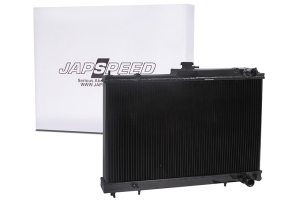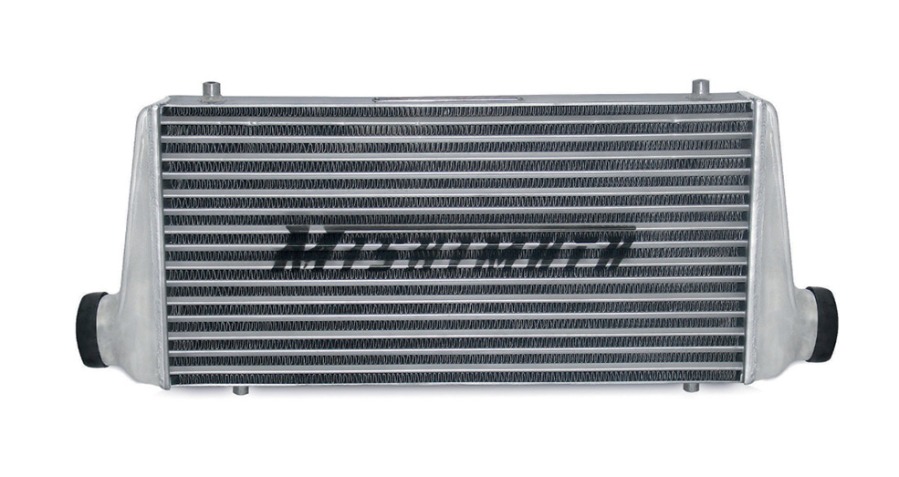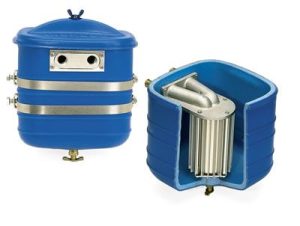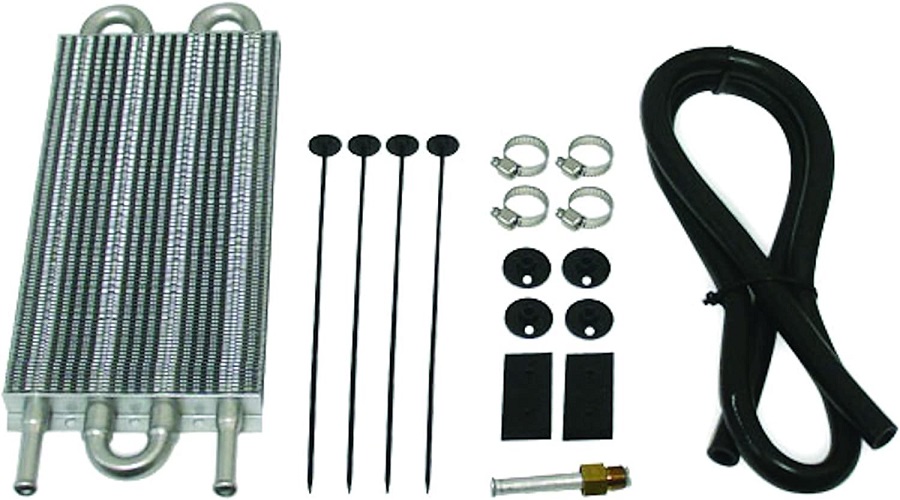
We take a look at your car's cooling components and how and why to upgrade them. This is radiators and intercoolers: explained.Â
The post Radiators and Intercoolers Explained appeared first on Fast Car.
Everyone likes to keep cool, and so does your car. Here, we take a look at your car’s cooling components and how and why to upgrade them. This is radiators and intercoolers: explained.
Words by Stav.
All cars need cooling systems, even the most basic of vehicles. The bigger and more powerful a car is, the bigger and more numerous the cooling components tend to be, and this counts for both standard and modified cars.
When it comes to tuning or simply using your car hard, you create more heat, which in turn gives the standard cooling system more to cope with. When you reach the limit of the cooling system, you can suffer from a loss of performance, reliability issues, or both. That, is when upgrades are needed.

Water Radiators
Presuming you’ve not got an old-skool air cooled engine, your car will, without a shadow of a doubt, have a water radiator. And in fact, you may have more than one!
As we’re sure you know, the radiator’s job is to keep the engine’s coolant temperature at a certain level, generally somewhere in the high-80-to-low-90 Celsius range. That is the sort of temperature range that is conducive of good reliability, as well as good economy, emissions, and performance. Higher temperatures can improve emissions and economy slightly, whereas lower temperatures can improve performance and reliability. However, the factory level for most cars is more of a happy medium between all factors.
When to upgrade your radiator
While most standard radiators are great even with hard track use or massively increased power levels, there’s always weaknesses, and at some point you may need to upgrade.
The most obvious reason for upgrading your radiator is because the factory one can’t put up with the abuse you’re giving it and the temperature is rising beyond safe limits. In that scenario, a larger aftermarket radiator is the way to go. The second reason is less obvious, and that’s that the plastic end tanks have been known to burst with age and heat, instantly destroying the radiator.
Thankfully the vast majority of cars have all-alloy performance upgrades available, usually of a larger capacity too. This makes for an easy direct replacement upgrade that solves both main standard radiator issues at once.

Air-Air Intercoolers
On every modern turbocharged and supercharged engine there will be some form of intercooler. The most common is an air-air item, which uses the outside air to cool the pressurized air that’s being fed in to your engine.
The act of pressurizing the air heats it up massively. So, the higher the level of boost you want from your turbo or supercharger, the higher the temperatures will be. As you can imagine, this has the potential to result in temps high enough to hurt both performance and reliability. This is why intercoolers are important if you’re running forced induction.
Why you should upgrade your intercooler
However, unlike radiators, many standard intercoolers are inadequate even at factory power levels. Some cars noticeably drop power with hard use even without modifications, and the majority of standard ones don’t cope well beyond very mild amounts of tuning. The reason the power is lost isn’t all directly from the high temperatures, but also the ECU retarding the timing or adding fuel to keep the engine reliable as the intake temps increase.
Temperature isn’t the only factor when it comes to intercoolers either, airflow is as well. If your car’s intercooler is too small, it can actually restrict maximum flow and therefore power.
While bigger is better when it comes to how effective an intercooler can be, position is important too. Most standard intercoolers are often mounted to one side or even on top of the engine, however most intercooler upgrades place the intercooler in the ideal position for air flow: front and centre, behind the front bumper.
Air-Water Intercoolers
These items perform the exact same task as an air-air intercooler, but use water to cool the pressurized air. This setup has advantages and disadvantages, so there’s no clear winner versus an air-air cooler. Ultimately, it depends on the car in question.
The main disadvantages of an air-water setup is it’s heavier, complex, and more expensive than an air-air cooler. You not only need the cooler itself, but another radiator to cool the water, a water pump, a header tank, and all the associated water lines. The advantages, however, can more than make up for this. After all, there’s good reason as to why they’re used on many performance production cars, as well as the majority of drag cars. One advantage is the cooler itself can be mounted anywhere on the car, unlike an air-air setup that needs direct airflow to be effective. The other advantage is, if all else is equal, an air-water setup is much more efficient at cooling, making for an overall better result.
Unfortunately, the key here is ‘if all else is equal’ as it rarely is. This is the biggest mistake that most people make when fitting one as an upgrade. While a big air-water chargecooler setup is almost unbeatable, any old air-water intercooler isn’t automatically better. A small cooler, small radiator, low fluid capacity, or a combination of all the above, makes for a setup that’s still nowhere near as good as a big front mount air-air intercooler.

Oil-Air Cooler
Another thing that needs to stay at its optimum temperature is your engine’s oil. Too cold or too hot and it won’t do its job of lubricating the engine properly, leading to premature wear or indeed catastrophic engine failure.
While the engine’s coolant is there to keep the oil temperatures in check (by simply absorbing heat as it runs through the engine), many cars have separate coolers specifically for the oil system.
The best known version, especially when it comes to aftermarket upgrades, is an oil-air cooler, which works in exactly the same way as your engine’s water radiator. But, of course, the oil runs through it rather than water. One thing you need to do before installing one is make sure that you even need it. Don’t presume you need one, even if people say so, and get proof that your temps are too high first. If you don’t you will end up overly cooling the oil, having the opposite of your intended effect and making the engine less reliable. Don’t think a thermostat will solve this issue either, as even when fully closed they allow quite a lot of oil past, leading to a setup where the oil may never get up to correct running temperature!
Oil-Water Cooler
An oil to water cooler is something that the majority of modern engines come fitted with as standard. Often mounted next to the oil filter, it uses your engine’s main cooling system to directly cool the oil. These could be best thought of as an oil temperature stabilizer, as not only can it keep the oil’s maximum temperature in check, but as your engine’s water naturally heats up faster than the oil, it helps bring the oil up to operating temperature faster too.
From an upgrade point of view, while less common, this type of cooler is available in various sizes and can be mounted anywhere where there is room much like an air-water cooler. Though, unlike those, these tend to always use the engine’s own coolant rather than a completely separate system.

Fuel Cooler
While primarily an issue on diesel and petrol direct injection engines (due to the high fuel pressures creating heat) you may be surprised to hear that your fuel can indeed get too hot, leading to performance losses. Hot weather conditions and small capacity fuel tanks magnify this issue, as well as very high flow fuel pumps. But, it’s still one of the less common ones to fit as an upgrade.
To know if you need one, you’ll need a fuel temperature sensor. If you don’t bother with that, you could be creating a lot of unnecessary work for yourself. Although a fuel cooler is unlikely to negatively affect performance when not needed, it will just add cost and complication for no gain at all!

Power Steering Cooler
You may not realize, but most cars have a cooler for the power steering fluid as standard. Most coolers are just a simple looped metal line in front of the radiator, but these are needed as the pumps operation and your steering actions considerably heat up the fluid. Overheating fluid tends to leak everywhere, give poor or totally inoperable power steering, and can even permanently damage steering components.
On a typical road or track day car you’re unlikely to get to this situation, but on a drift or rally car where a lot of hard steering is involved – especially one where you’re out for long periods at a time – this can become an issue. Thankfully, to install an upgrade, it is no different to an oil-air cooler for your engine. You simply need to run one on the low pressure side of the power steering pipework.
Transmission Cooler
This is the least common type of cooler for your car, but in certain situations it is vital. Transmission coolers almost always resemble the conventional oil-air cooler, as that’s exactly what they are, but for your transmission oil.
For manual transmission vehicles they are generally fitted if the car is expected to do high speeds for long periods of time, and these can be fitted to the gearbox, differential, or both. The fluid is usually circulated by an external electric pump.
For cars with automatic transmissions the above applies also, but due to their design which relies upon the fluid not just for lubrication but for actual function of the gearbox, the oil is heated up far more, increasing the need for a sizable transmission cooler. This is especially true for high power, high load setups such as drag cars.





